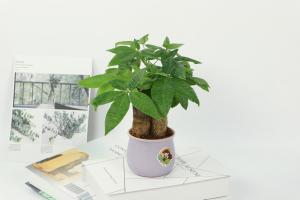How to Tie Tomato Plants Up
Tomatoes are one of the most popular plants in the vegetable garden. They are easy to grow and produce abundant fruits. However, as the plants grow, they can become unruly and tangled. Tying tomato plants up is an effective way to keep them tidy and healthy. In this article, we will show you how to tie tomato plants up in simple steps.
Why Tie Tomato Plants Up?
There are several benefits of tying tomato plants up. First, it allows the plants to grow straight up instead of sprawling on the ground. This makes it easier to harvest the fruits and ensures that they don't lie on the soil and rot. Second, tying up tomato plants improves air circulation, which can reduce the risk of diseases. Third, it prevents the branches from breaking due to the weight of the fruits.
When to Tie Tomato Plants Up?
The best time to tie tomato plants up is when they are still young and small. This is usually about two to three weeks after transplanting or when the seedlings have grown to about 6 inches tall. At this stage, the plants are still flexible and easy to train. However, if you have neglected to tie up your tomato plants and they have become too tall or bushy, don't worry. You can still tie them up, but it may be a bit more challenging.
How to Tie Tomato Plants Up – Step-by-Step Guide
Here are the steps to follow when tying tomato plants up:
Step 1: Gather Supplies – You will need garden twine, scissors, and stakes or cages to support the plants.
Step 2: Set up Stakes or Cages – Insert the stakes or cages around the plants, making sure they are firmly in the ground and stable.
Step 3: Tie Plants to Stakes or Cages – Take a piece of twine and tie one end to the stake or cage. Then, wrap the twine around the stem of the plant, just below a set of leaves. Tie the other end of the twine to the stake or cage, making sure it is tight enough to hold the plant upright but not too tight that it cuts into the stem.
Step 4: Repeat – Continue tying up the plant in several places, about every 6 inches, until it reaches the top of the stake or cage or until you reach the desired height.
Step 5: Prune – Remove the lower leaves that are touching the soil. This will help prevent diseases and pests from attacking the plant.
Additional Tips
Here are some additional tips to keep in mind when tying tomato plants up:
Use soft garden twine that won't damage the stems of the plant.
Check the plants regularly and re-tie them as necessary.
Don't tie the twine too tightly around the stem, as this can damage the plant and inhibit its growth.
Use a trellis system for indeterminate tomato plants that can grow several feet tall.
Water the plants regularly and fertilize them as needed.
Conclusion
Tying tomato plants up is an essential task for any gardener who wants to grow healthy and productive tomato plants. By following the simple steps outlined in this article, you can ensure that your plants stay upright and disease-free, and produce abundant fruits. Don't forget to prune the plants regularly and check the twine to ensure that it is holding up the plants properly. Happy gardening!

 how many times do yo...
how many times do yo... how many planted tre...
how many planted tre... how many pine trees ...
how many pine trees ... how many pecan trees...
how many pecan trees... how many plants comp...
how many plants comp... how many plants can ...
how many plants can ... how many plants and ...
how many plants and ... how many pepper plan...
how many pepper plan...































